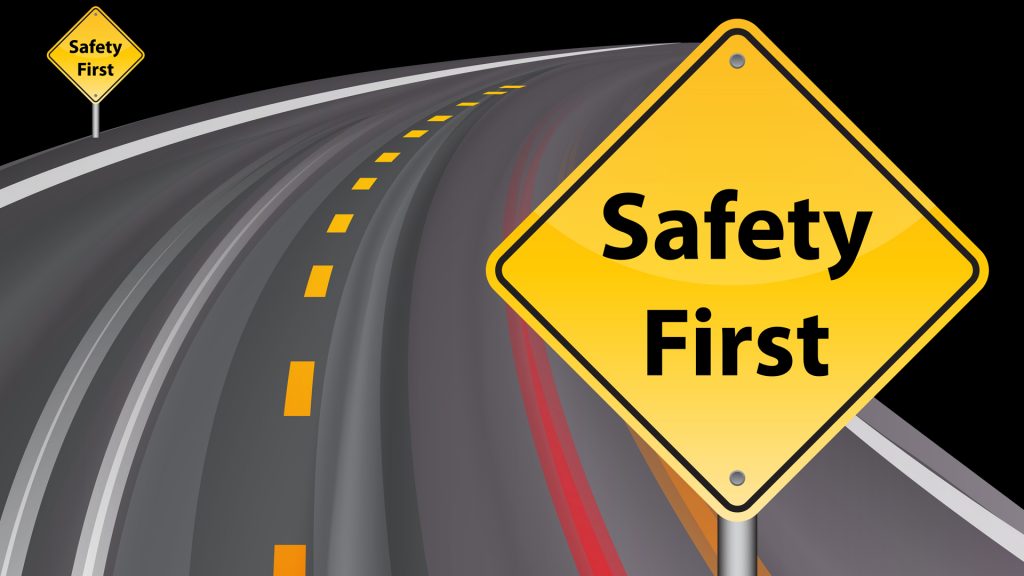Every time we hop into a vehicle and hit the road, we set off on an adventure, bursting with limitless opportunities. Whether it’s our everyday drive or an epic road trip, safety is our ultimate goal. Road safety isn’t just about following rules; it’s about adopting smart habits, embracing vehicle tips, and decoding the traffic signal lingo. In this article, we’re diving into these essential road safety elements to help you become a savvy and responsible driver.

Forming Good Habits for Road Safety
Buckle Up: Your trusty seatbelt – it’s like that loyal sidekick who’s got your back no matter what. So, before you crank up the engine, remember to give your seatbelt a warm embrace. Why? Studies have shown that seatbelts are the superheroes of the road, swooping in to save the day by reducing the risk of serious injury during unexpected plot twists.
Stay Sober, stay sharp: Alcohol can be fun but it is no fun when paired with driving. It impairs your judgment and coordination. Avoid driving under the influence of alcohol or drugs, including prescription medications that cause drowsiness.
Do you really need speed?: Speed limits are set for a reason. They take into account road conditions and safety considerations. Stick to the posted speed limits and adjust your speed according to weather and traffic conditions.
No Texting While Driving: Let’s call a spade, a spade. texting while driving is like trying to juggle flaming torches– it’s a disaster waiting to happen. Distracted driving, particularly texting or using a smartphone, is a leading cause of accidents. Put your phone away or use hands-free technology if you need to make calls.
Maintain a Safe Following Distance: You know that one person who invades your personal space? Well, don’t be that driver! Maintain a safe distance from the car in front of you, giving yourself ample time to react when the plot takes a twist and brakes are slammed.
Signal your intentions: The art of communication is key, even on the road. Signalling your intentions is vital for the safety of both you and other drivers. Always use your turn signals when changing lanes or making turns.
Stick to your lane: Weaving in and out of traffic is not a cool move. Stay in your lane, use your signal when necessary, and you’ll be the laidback road legend, not the impatient road menace.
Level-up Your Vehicle: Tips for a Smooth Ride
Regular Vehicle Maintenance: Ensure your vehicle is in good working condition. Regularly check and maintain brakes, tires, lights, and steering. A well-maintained vehicle is less likely to break down or cause accidents.
Proper Tire Care: Don’t let your tires be the weak link in your quest for a smooth ride. Maintain the right tire pressure and tread depth – it’s like giving your car new shoes for every adventure.
Clean and Adjust Mirrors: Properly adjusted mirrors eliminate pesky blind spots, allowing you to see surrounding vehicles more clearly.
Let there be light: Headlights aren’t just for those dark and stormy nights but also during inclement weather, such as rain or fog. This makes your vehicle more visible to others.
Brake Smoothly: Smooth braking isn’t just for race car drivers; it’s for anyone who wants to keep their ride in tip-top shape. No sudden, hair-raising stops – just gentle, controlled braking reduces wear on your brakes and helps prevent skidding.
Maintain Safe Distances: As mentioned earlier, maintain a safe following distance to give yourself ample time to stop safely.
Watch for Pedestrians and Cyclists: Be vigilant for pedestrians and cyclists, especially in urban areas. They may not always be visible or obey traffic signals.
Understanding Traffic Signals
Red Means Stop: When you see a red traffic light, it means ‘hold your horses.’ You must come to a complete stop behind the stop line or, if there’s no stop line, at the intersection itself. Wait until the light turns green before proceeding.
Green Means Go, Go, Go: A green traffic light indicates that you can proceed through the intersection if it’s clear and safe to do so. However, always yield the right of way to any oncoming traffic, pedestrians, or vehicles already in the intersection.
Yellow Means Caution: A yellow light signals that the green light is about to turn red. Slow down and prepare to stop unless it’s unsafe to do so. In some places, it’s illegal to enter an intersection on a yellow light.
Flashing Red or Yellow Lights: Flashing red lights at an intersection means to stop completely and proceeding when it’s safe. Flashing yellow lights means caution; slow down and be prepared to stop if necessary.
Traffic Signs and Signals: Pay close attention to traffic signs and signals, such as stop signs, yield signs, and pedestrian crossings. Always follow the instructions they provide.
Left and Right Turn Signals: When turning, use your vehicle’s turn signals to indicate your intentions. Left signals are used for left turns, and right signals for right turns.
Pedestrian Signals: Don’t forget that pedestrian lives matter. Be aware of pedestrian signals, such as the “Walk” and “Don’t Walk” signals at crosswalks. Wait for the “Walk” signal before crossing, and do not enter the crosswalk on a “Don’t Walk” signal.
Road safety is not a matter of chance, but a matter of choice. By forming good habits, following vehicle safety tips, and understanding traffic signals, you can significantly reduce the risk of accidents and contribute to a safer road environment for everyone. Remember, whether it’s a quick trip to the store or an epic cross-country odyssey, safety should always be your trusty sidekick. Buckle up, stay sharp, and enjoy the ride! Safe travels, adventurers!